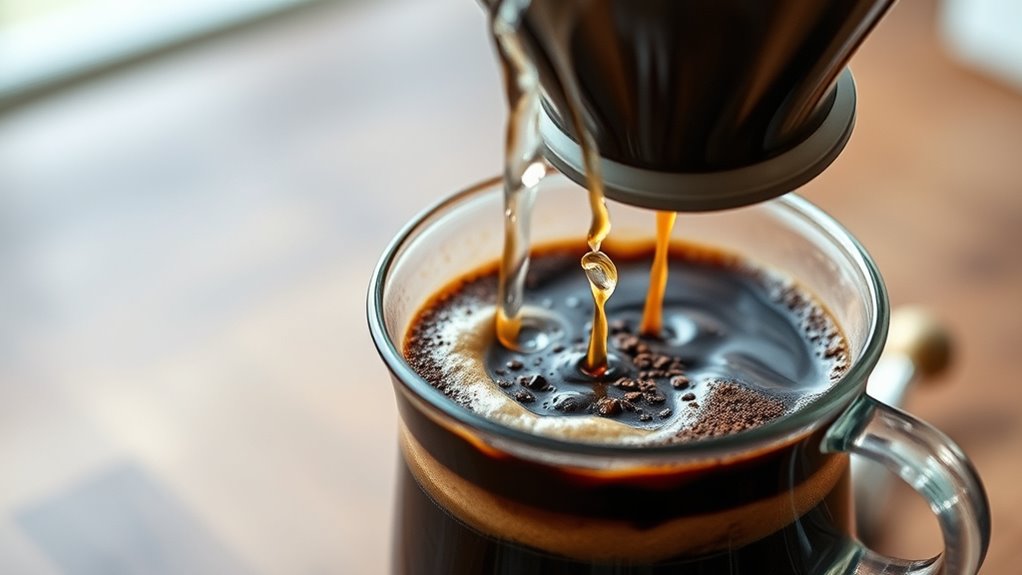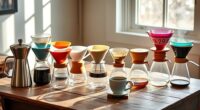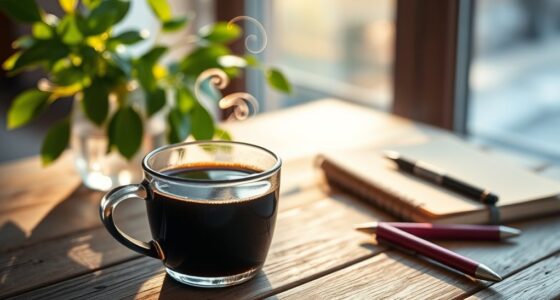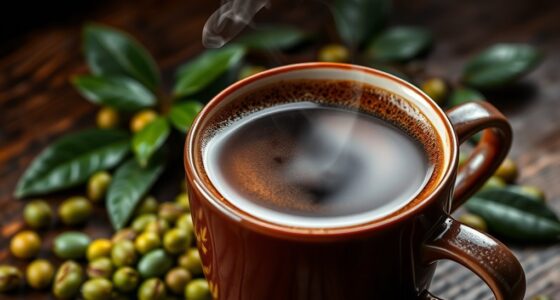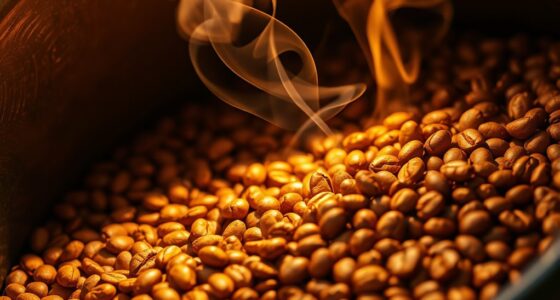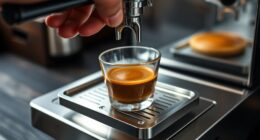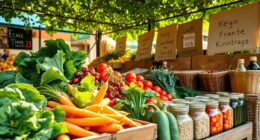Understanding coffee extraction is essential for improving your coffee’s taste. Extraction pulls flavors and compounds from coffee beans into water, affecting what you sip. If beans are under-extracted, you’ll taste sourness; over-extraction leads to bitterness. The right balance targets Total Dissolved Solids (TDS) between 18% and 22%. Factors like grind size, water temperature, and brewing time all play a role. Discovering these nuances can enhance your brewing skills, and there’s so much more to explore!
Key Takeaways
- Coffee extraction pulls essential flavors and compounds from ground coffee into water, influencing overall taste and aroma.
- Ideal extraction targets a Total Dissolved Solids (TDS) range of 18% to 22% for balanced flavors.
- Under-extraction results in sourness and sharp acidity, while over-extraction leads to bitterness and a hollow profile.
- Factors like grind size, brewing temperature, and contact time significantly impact the extraction process and flavor outcomes.
- Understanding extraction levels helps improve brewing skills and enhances appreciation of coffee’s flavor nuances.
What Is Coffee Extraction?

Coffee extraction is the art of pulling flavors and compounds from roasted ground coffee into water during brewing. This process dissolves approximately 28% of the coffee beans, releasing essential flavor compounds like caffeine, acids, and sugars.
Achieving ideal extraction usually means targeting a Total Dissolved Solids (TDS) level between 18% and 22%. Several factors influence this balance, including grind size, brewing methods, and water temperature.
If you under-extract your coffee, it can taste sour and lack sweetness, while over-extracted coffee often tastes bitter and hollow. Mastering these dynamics is fundamental for crafting a delicious cup, ensuring you enjoy the full flavor profile of your favorite brew without unwanted bitterness or sourness. Additionally, understanding the effects of coffee on health can further enhance your appreciation of the beverage.
The Impact of Extraction on Flavor
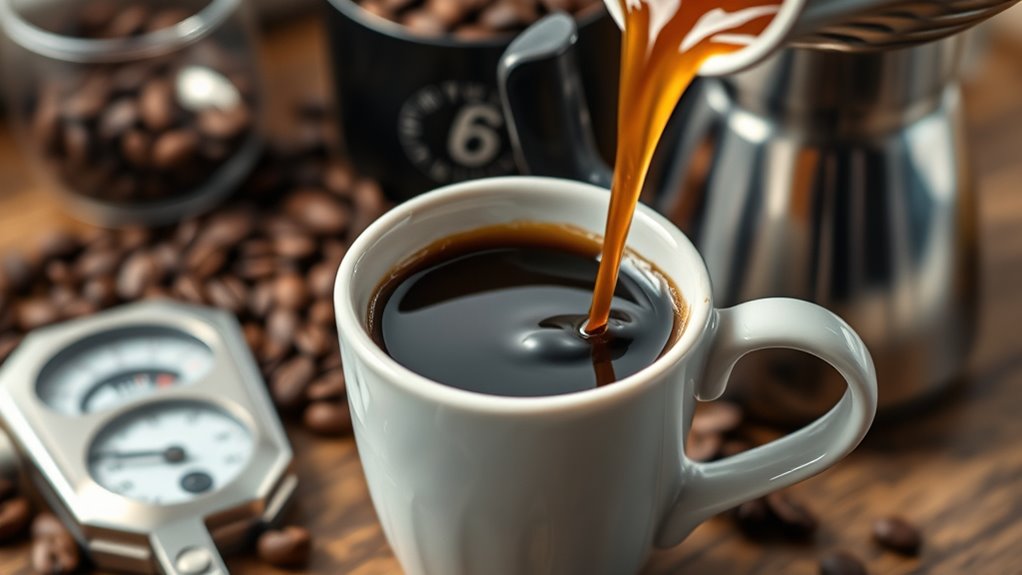
When you brew coffee, the extraction process directly influences the flavors you experience in your cup. Ideal extraction typically hovers between 18% and 22% Total Dissolved Solids (TDS). If you under-extract, you’ll taste sourness and sharp acidity, while over-extraction leads to bitterness and a hollow profile. The grind size and brew time play essential roles in this process. Finer grinds speed up extraction, enhancing clarity, while coarser grinds slow it down. Balancing these variables, along with water temperature, is critical for achieving a harmonious flavor profile.
| Extraction Type | Flavor Characteristics | TDS Percentage |
|---|---|---|
| Under-extraction | Sour, unbalanced | Below 18% |
| Ideal extraction | Balanced, rich | 18% – 22% |
| Over-extraction | Bitter, astringent | Above 22% |
Factors Influencing Extraction
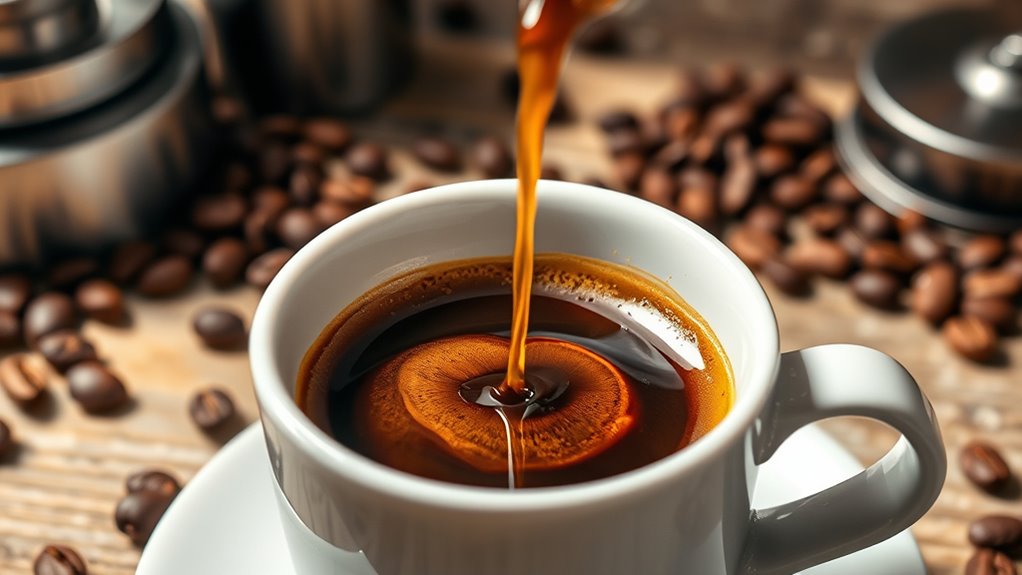
Several factors influence extraction, shaping the flavors you ultimately savor in your cup.
The grind size of your coffee beans is essential; finer grinds expose more surface area, speeding up extraction as water interacts more efficiently.
Brewing temperature also plays a significant role, with ideal ranges between 195–205℉ ensuring you dissolve those desired compounds effectively.
Don’t overlook contact time; shorter brews can boost acidity, while longer ones risk bitterness from over-extraction.
Additionally, the quality of your water matters—its mineral content affects flavor, and contaminants can ruin your cup.
Finally, maintaining consistent bed depth during brewing prevents channeling, ensuring even extraction and a balanced flavor profile in your final brew.
Understanding brewing methods can further enhance your coffee extraction techniques for optimal flavor.
Identifying Under-extracted and Over-extracted Coffee
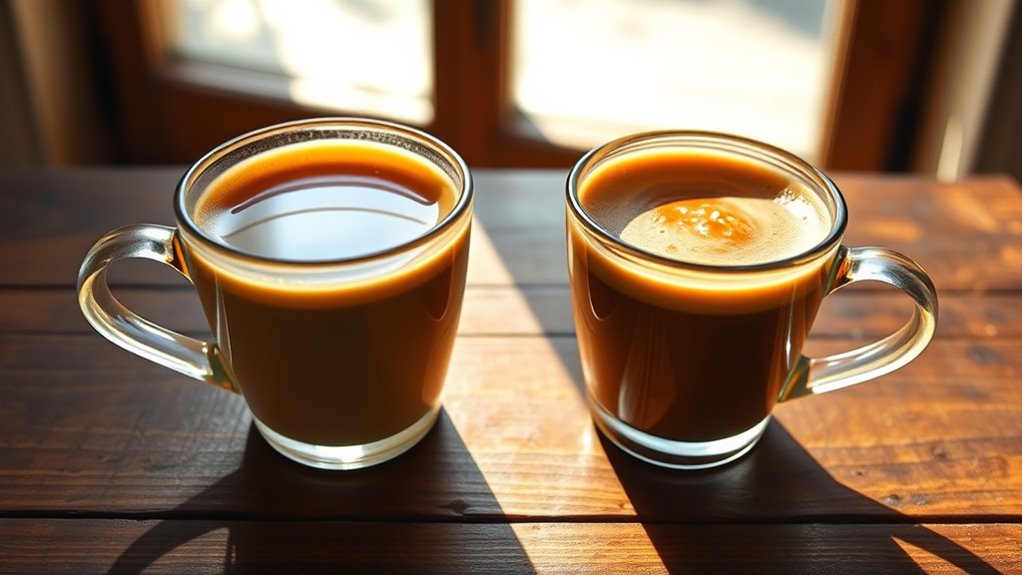
Understanding the difference between under-extracted and over-extracted coffee can greatly enhance your brewing skills. Recognizing these extraction levels helps you appreciate the nuances of coffee tastes.
Here are three key indicators to watch for:
- Under-extracted coffee: You’ll notice a sourness, sharp acidity, and a salty mouthfeel, suggesting not enough flavor compounds have been extracted.
- Over-extracted coffee: This often leads to bitterness and dryness, with a hollow flavor, indicating excessive removal of soluble flavors.
- Ideal extraction: Aim for an extraction level between 18% and 22% for balanced coffee, maximizing Total Dissolved Solids (TDS) while avoiding both extremes.
Achieving Ideal Coffee Extraction
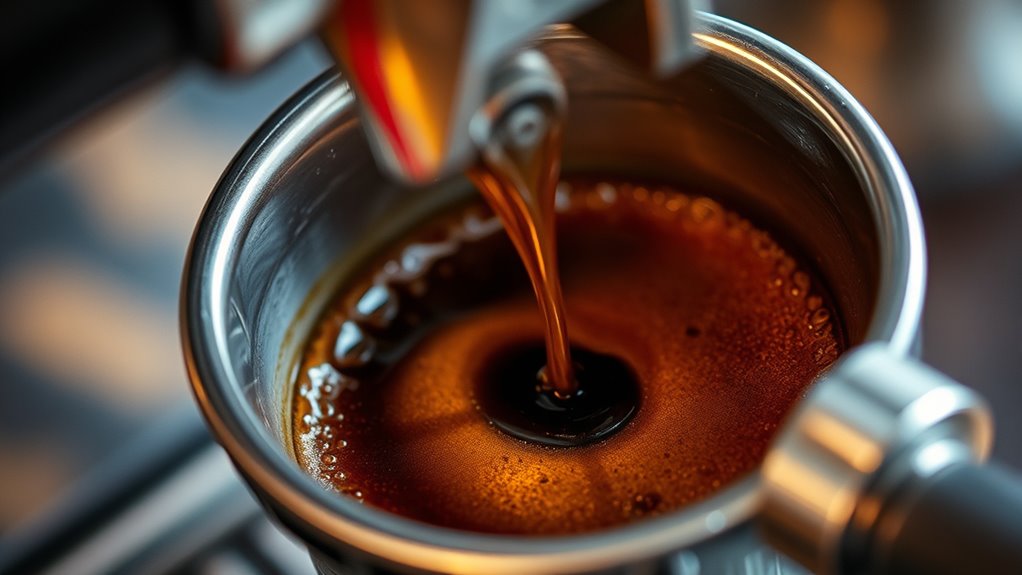
Achieving ideal coffee extraction is all about finding the right balance between flavor complexity and strength. Aim for a Total Dissolved Solids (TDS) range of 18–22% to create delicious coffee without bitterness. Adjusting your grind size and water temperature between 195–205℉ can greatly impact extraction time and flavor.
| Brewing Variables | Impact on Extraction |
|---|---|
| Grind Size | Affects surface area |
| Contact with Water | Influences flavor extraction |
| Water Temperature | Optimizes compound dissolution |
| Even Extraction | Guarantees balanced flavors |
| Extraction Time | Prevents under-extraction |
Frequently Asked Questions
How Do You Extract More Flavor From Coffee?
To extract more flavor from coffee, you’ll want to start by adjusting your grind size; a finer grind enhances extraction, while a coarser one helps avoid bitterness.
Experiment with brewing times to find the sweet spot—longer times can boost complexity, while shorter ones can prevent sourness.
Keep your water temperature between 195-205℉ and make sure you’re using quality water.
Aim for a TDS level of 18-22% to achieve a balanced brew.
What Is the 80 20 Rule for Coffee?
The 80/20 rule for coffee means that 80% of the flavor you enjoy comes from just 20% of the brewing variables.
Focus on key factors like grind size, water temperature, and brew time to maximize your coffee’s taste. By making small adjustments to these critical elements, you can greatly enhance your brewing experience.
Prioritizing these essentials helps you create a better cup without getting bogged down by less important details.
How Do You Improve Coffee Extraction?
To improve coffee extraction, start by adjusting your grind size; a finer grind increases surface area, enhancing flavor release.
Confirm your brewing water’s temperature is between 195–205℉ to optimize soluble compound extraction.
Experiment with brew time to avoid under or over-extraction.
Use high-quality water to enhance flavor, and guarantee a consistent bed depth of coffee grounds for even extraction, resulting in a more balanced and enjoyable cup of coffee.
What Is the Best Coffee Extraction Percentage?
The best coffee extraction percentage usually falls between 18-22% total dissolved solids (TDS).
This range balances flavor, ensuring you get a rich cup without unwanted bitterness or sourness.
You’ll want to adjust your grind size and brewing method based on the coffee type you’re using, as each has its unique characteristics.
Experimenting within this percentage will help you find what tastes best for you while enhancing your overall coffee experience.
Conclusion
In the world of coffee, extraction is like a dance, where each step influences the rhythm of flavor. When you master the moves—balancing time, temperature, and grind—you’ll create a symphony that delights your senses. Avoid the missteps of bitterness or sourness by knowing when to pull back or push forward. With practice, you’ll be the maestro of your morning brew, crafting a harmonious cup that awakens not just your taste buds, but your soul.
